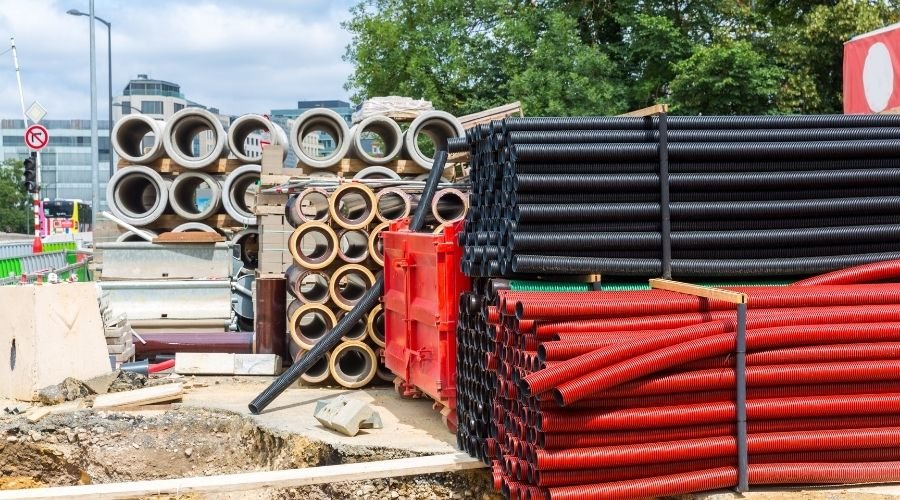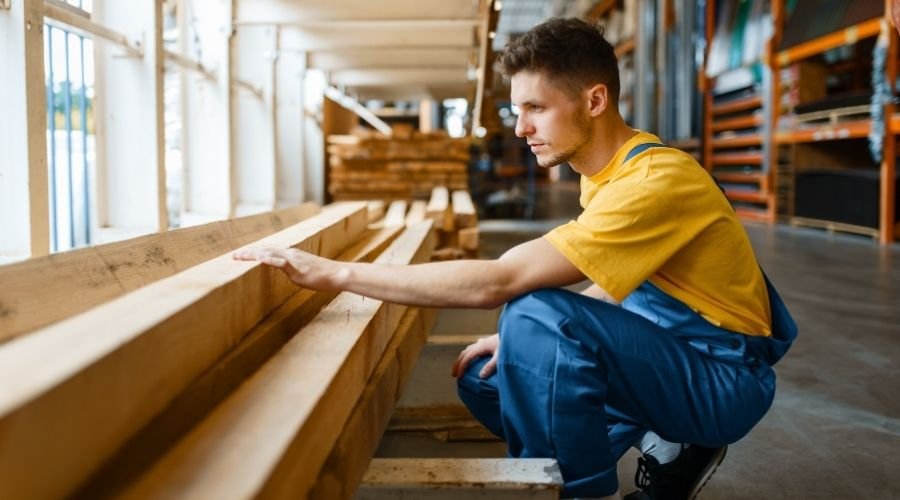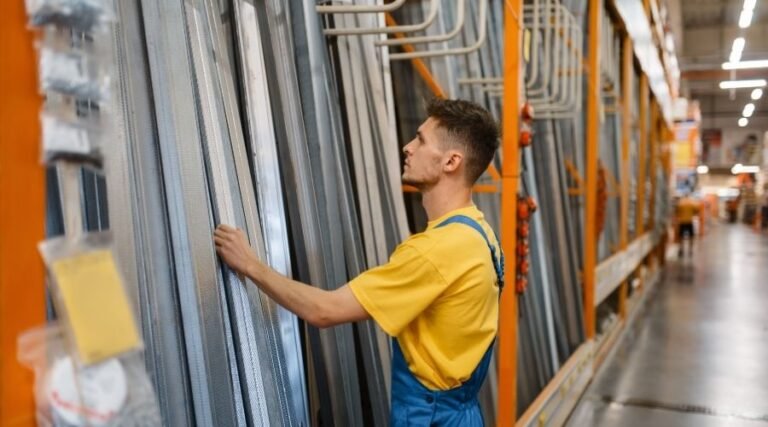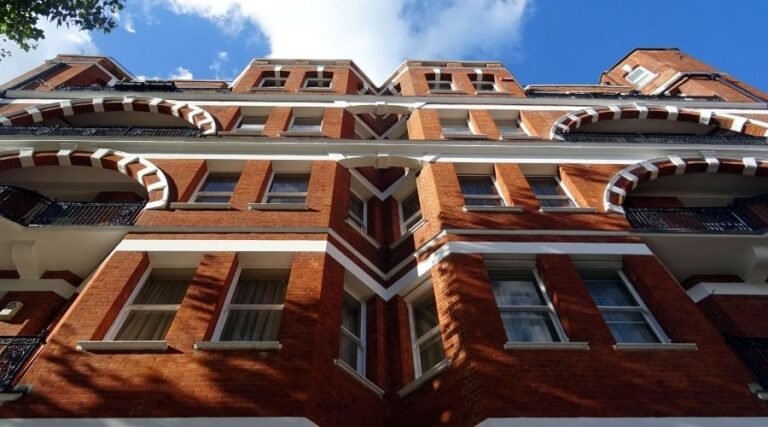Choosing construction materials in Australia is never just about the look or the price tag. The right decision means protection against searing summer heat, sudden downpours, coastal humidity, and the ever-present threat of termites—all part of the Australian climate’s unique challenges. Homes and commercial spaces in Sydney and beyond demand more from every brick, slab, and panel.
Durability, sustainability, and cost-effectiveness form the backbone of wise material selection. This guide serves as your practical companion—whether you’re planning a custom home, managing a commercial fitout, or upgrading a much-loved family residence.
What to expect:
- Insights on how local weather shapes building performance
- A breakdown of material options proven in Australian conditions
- Guidance for balancing upfront costs with long-term value
Your project deserves materials that stand up to Sydney’s climate while supporting your vision for comfort and lasting quality. Welcome to your material selection guide.

Understanding the Australian Climate and Its Impact on Construction Materials
Australia’s diverse climate presents various challenges that require careful consideration when choosing building materials. Different regions of Australia experience different weather patterns, such as hot summers, heavy rainfall, cyclones, arid heat, and termite infestations. These factors significantly influence the selection of construction materials.
Key climate factors shaping material choice:
- Extreme heat: Prolonged sun exposure can cause warping, fading, or cracking in inferior materials. Roofs and external cladding must withstand UV intensity without degrading.
- Heavy rain & humidity: Moisture intrusion leads to swelling, rot, or corrosion if materials are not adequately sealed or inherently resistant.
- Termite-prone zones: Timber structures face ongoing threat from subterranean termites. Only pre-treated woods or non-organic alternatives can offer lasting protection.
The impact of these climatic challenges goes beyond appearance—it affects building durability, structural integrity, and occupant well-being. To ensure resilience against the climate, it is crucial to select materials that can withstand extreme weather conditions and resist pests.
This involves prioritizing products with proven performance in local environments: concrete for its ability to resist moisture, fibre cement for its stability against temperature changes, and advanced insulation systems that remain effective during heatwaves and storms.
By understanding the specific climate challenges faced in Australia, we can make informed decisions about construction materials. This knowledge enables us to create homes and workplaces that not only survive but also provide comfort and safety for their occupants.
Key Factors to Consider When Choosing Construction Materials in Australia
Selecting building materials in Australia means weighing every decision against the realities of the local environment. The right choice isn’t just about what looks good—it’s a matter of performance, safety, and lasting value for your property.
1. Durability and Resistance
Materials must withstand Sydney’s heavy rainfall and coastal humidity. Options like fibre cement or concrete provide resilience against warping, rot, and mould.
With bushfire risk present across New South Wales, non-combustible materials—such as brick veneer, masonry, and steel—offer peace of mind and compliance with safety regulations.
Termites can devastate timber structures. Treated timber, steel framing, or naturally termite-resistant hardwoods are essential in high-risk zones.
2. Maintenance Requirements
Labour shortages can impact upkeep. Low-maintenance claddings (fibre cement, brick) outlast traditional timber weatherboards, reducing time and costs for ongoing care.
3. Aesthetic Value
Material selection shapes your building’s character. Contemporary homes may favour sleek concrete or rendered finishes, while heritage renovations might call for classic weatherboards or face bricks to respect Sydney’s diverse architectural styles.
4. Structural Integrity
Every component must contribute to the safety and resilience of the structure. Concrete slabs provide robust thermal mass and stability; engineered timbers can offer strength without excessive weight.
5. Environmental Impact
Prioritise sustainability by choosing locally sourced or recycled content where possible. Renewable materials like hempcrete or responsibly harvested timber reduce the project’s carbon footprint while supporting Australian industries.
6. Cost Implications
Initial material costs should be balanced against long-term savings in energy efficiency, repairs, and maintenance. Investing up front often delivers greater value over decades of use.
7. Compatibility
Materials must integrate seamlessly with windows, insulation, roofing, and other building systems to prevent weak points that could compromise performance.
8. Health Considerations
Opt for low-VOC (volatile organic compound) paints and finishes to safeguard indoor air quality. Select mould-resistant linings and insulations to protect occupants’ health year-round.
Making informed choices at this stage sets the foundation for a space that endures Sydney’s climate—efficiently, sustainably, and safely.
Popular Construction Materials Suitable for the Australian Climate
Hempcrete: Sustainable Insulation Benefits and Limitations
Hempcrete is gaining popularity in Australia for its sustainable insulation properties. Made from hemp fibers mixed with lime, it offers excellent thermal performance and breathability. However, it is non-structural, meaning it cannot be used for load-bearing walls. This material is ideal for homeowners looking to enhance energy efficiency while reducing their environmental footprint.
Brick Veneer: Termite Resistance and Aesthetic Appeal
Brick veneer is a preferred choice in New South Wales due to its termite resistance and insulating properties. It provides a robust exterior that can withstand harsh weather conditions while offering an aesthetic appeal that complements traditional and contemporary architectural styles. Brick veneer also contributes to the thermal comfort of homes, making it suitable for varied climates.
Timber Framing: Renewable Resource Advantages and Pest Treatment Needs
Timber framing stands out as a renewable resource that supports sustainable construction practices. Its versatility allows for diverse design possibilities. Nonetheless, timber requires proper pest treatments to prevent termite infestations, which are prevalent in many Australian regions. Careful selection of treated timber can mitigate these risks effectively.
Double Brick: Thermal and Acoustic Insulation Benefits
Double brick construction offers superior thermal and acoustic insulation, essential for maintaining comfort in extreme temperatures and noisy environments. Though higher in cost compared to other materials, the long-term benefits of reduced energy bills and enhanced living conditions make double brick an attractive option.
Steel Frame: Strength and Termite/Fire Resistance
Steel frames provide unmatched strength along with termite and fire resistance, crucial for areas prone to these hazards. Prefabrication advantages include faster construction times and reduced labor costs. Steel’s durability ensures longevity, making it a reliable choice for both residential and commercial projects.
Autoclaved Aerated Concrete (AAC): Lightweight Thermal Insulation
Autoclaved Aerated Concrete (AAC) combines lightweight properties with excellent thermal insulation and eco-friendliness. AAC blocks reduce energy consumption by maintaining stable indoor temperatures. Their ease of installation further adds to the appeal for builders focused on efficient project timelines.
Insulated Concrete Forms (ICF): Energy Efficiency and Noise Reduction
Insulated Concrete Forms (ICF) enhance energy efficiency by providing substantial thermal insulation. They also offer noise reduction capabilities, ideal for urban settings where sound pollution is a concern. ICFs contribute to sustainable building practices through their durable and energy-saving characteristics.
Weatherboard Cladding: Versatility and Maintenance Considerations
Weatherboard cladding offers versatility with options like timber or fibre cement. While timber requires regular maintenance to prevent decay from moisture exposure, fibre cement presents a low-maintenance alternative resistant to harsh weather conditions. Both options allow flexibility in design while ensuring protection against the elements.
Fibre Cement Siding: Durability Against Harsh Weather
Fibre cement siding is renowned for its durability against Australia’s harsh weather conditions, including extreme heat and heavy rains. Its low maintenance needs make it a practical choice for homeowners seeking resilient exterior solutions without frequent upkeep requirements.
Concrete Slabs: Thermal Mass Benefits Plus Fire Resistance
Concrete slabs offer significant thermal mass benefits, helping regulate indoor temperatures by storing heat during the day and releasing it at night. Their fire resistance enhances safety, making them suitable for areas prone to bushfires. The ease of installation further simplifies construction processes.
The selection of appropriate materials tailored to Australian climatic conditions ensures durability, sustainability, and cost-effectiveness across various projects from residential homes to commercial buildings.
Balancing Performance with Sustainability in Material Selection
When selecting construction materials, balancing performance with sustainability is crucial. Integrating Green Star planning and passive design principles ensures that your building not only performs efficiently but also minimizes its environmental impact.
Key strategies include:
- Use of Energy-Efficient Materials: Materials like insulated concrete forms (ICFs) and autoclaved aerated concrete (AAC) can significantly reduce energy consumption. These materials provide excellent thermal insulation, reducing the need for artificial heating and cooling.
- Preference for Locally Sourced or Recycled Materials: Opting for materials sourced locally or made from recycled content helps minimize the carbon footprint associated with transportation and manufacturing. This approach supports local industries and promotes sustainable building practices within New South Wales.
- Green Construction Techniques: Incorporating renewable materials such as sustainably harvested timber or bamboo, along with low VOC paints and finishes, ensures healthier indoor air quality while supporting green construction goals.
Emphasizing these elements in your material selection process aligns with the growing demand for sustainable building materials in Australia. This not only enhances the longevity and performance of your construction projects but also contributes to a greener future.

Practical Tips for Selecting Materials Based on Specific Project Types in Sydney Region
Residential Projects
When it comes to residential construction in Sydney, selecting the right materials is crucial for ensuring thermal comfort and pest resistance. For custom homes and granny flats:
- Timber: Offers excellent insulation properties but requires regular treatment against termites.
- Brick Veneer: Provides natural insulation, aesthetic appeal, and termite resistance, especially suited for NSW’s varied climate.
- Insulated Panels: Combining insulation with structural integrity, these panels help maintain a comfortable indoor temperature year-round.
Commercial Fitouts
For commercial building projects in NSW, durability and fire safety compliance are paramount:
- Fibre Cement Siding: Known for its robustness against harsh weather conditions and minimal maintenance needs. Ideal for office and retail fitouts.
- Concrete Slabs: Offer both thermal mass benefits and superior fire resistance. Easy installation makes them a practical choice for commercial setups.
- Steel Framing: Provides strength and fire safety, essential for high-traffic areas like healthcare clinics or hospitality venues.
Renovation Projects
Renovation projects often focus on facade modernization while ensuring protection:
- Weatherboard Cladding: Versatile options in timber or fibre cement provide aesthetic appeal and resilience. Timber may require more upkeep but offers a classic look.
- Fibre Cement Siding: Low maintenance with high durability against weather extremes, making it suitable for refreshing the exterior of older properties.
Selecting the right materials for specific project types ensures long-term performance and aligns with local climate demands.
Maintenance Considerations for Long-Term Material Performance in Australian Conditions
Selecting low-maintenance building materials in Australia means anticipating not just the initial build, but also the evolving demands of Sydney’s climate and local labor market. Homeowners and property managers often weigh material choices against the availability of skilled trades for ongoing care.
Timber Cladding
Timber cladding brings warmth and architectural character, yet requires consistent attention. Regular painting, sealing, and inspections prevent rot, mold, and termite intrusion. In coastal suburbs or regions with high rainfall, this upkeep becomes essential for longevity.
Fibre Cement Siding
Fibre cement siding stands out as a leading example of weather-resistant cladding with low maintenance needs in NSW. Its resistance to moisture, fire, and pests drastically reduces upkeep—usually limited to periodic washing and repainting every decade.
Brickwork
Brickwork excels when durability is paramount. Properly installed bricks need minimal care beyond occasional re-pointing of mortar joints and cleaning to remove dirt or efflorescence.
Protective treatments extend the lifespan of most exterior materials:
- UV-resistant sealants can preserve timber hues.
- Anti-graffiti coatings provide easy-clean solutions for commercial facades.
- Waterproof membranes shield porous surfaces from rain-driven moisture ingress.
Choosing construction materials in Australia that align with your maintenance resources ensures buildings remain safe, attractive, and cost-efficient year after year—a foundation for lasting value as regulations evolve and project goals grow.
Partnering with Skanska Construction Group for Expert Material Selection Guidance
Choosing the right materials for your construction project in Sydney can be tough, especially with its unpredictable weather. But with Skanska Construction Group Sydney, you have a trusted partner by your side.
Why Choose Skanska?
Here’s what sets us apart:
1. Over 10 Years of Experience
Our experienced team knows the ins and outs of local regulations and climate conditions. This means we can help you pick materials that not only look great but also stand up to Sydney’s weather.
2. Comprehensive Services
Whether you’re starting from scratch or already have a design in mind, we’ve got you covered. Our licensed builders in NSW will work closely with you to integrate the best material choices into every stage of your project.
3. Transparent Quoting Process
We believe in open and honest communication. That’s why we have a dedicated point of contact who will keep you updated throughout the construction process. You’ll always know what’s happening and can make decisions accordingly.
The Benefits of Working with Us
By choosing Skanska, you’re not just getting a construction company – you’re gaining access to expert advice that can make a real difference in your project.
- Durability: We’ll help you select materials that are built to last, saving you money on repairs and replacements down the line.
- Sustainability: Our team is committed to environmentally-friendly practices. We’ll guide you towards using sustainable materials that reduce your carbon footprint.
- Aesthetic Excellence: We understand that looks matter too. With our knowledge of design trends and styles, we can recommend materials that enhance the beauty of your building.
Ready to take your construction project to new heights? Contact Skanska Construction Group Sydney today!
Conclusion
Choosing the right construction materials in Australia requires a deep understanding of local climate challenges and the properties of different materials. In New South Wales, using sustainable building practices not only ensures durability but also demonstrates a commitment to protecting the environment.
To navigate these complexities effectively, it’s advisable to consult with experienced local builders such as Skanska Construction Group. Their expertise based in Sydney, personalized guidance, and comprehensive project management services guarantee successful outcomes for your construction projects.
For customized advice on selecting materials that strike a balance between performance, sustainability, and cost-effectiveness, trust Skanska Construction Group to turn your construction vision into reality.




